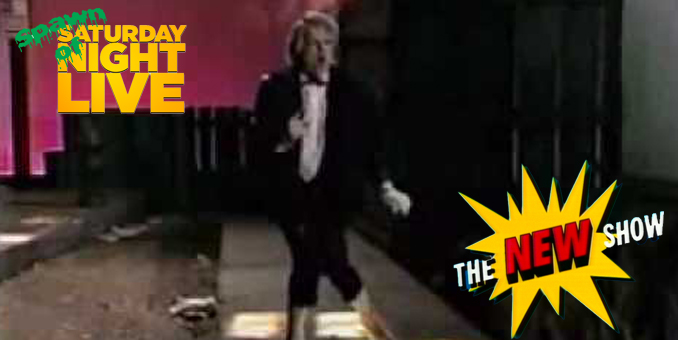
In honor of Saturday Night Live‘s 50th Anniversary, we will be going through its rich and varied history which at times brings us to the many other sketch shows inspired the iconic late night comedy series. In this installment we look at SNL creator Lorne Michaels attempt at launching a second sketch comedy series, perhaps proving that lightening doesn’t always necessarily strike twice.
The early 1980s were an uncertain time for Saturday Night Live creator Lorne Michaels. Feigning exhaustion from the proceeding five years of molding and producing the show into the cultural juggernaut it had become, Michaels wanted to take the show off the air for a season while he rested and regrouped. As all the original cast members were heading out to reap the rewards, in the form of movie and television offers, that their hard work had earned them. Michaels felt he needed that gap year to rebuild. NBC disagreed with him, so Michaels departed for the hoped-for sunnier climes of motion pictures while NBC continued on with the show to decidedly mixed results.
Hollywood did not turn out to be all that the man who had been heralded as redefining American comedy thought it would. A development deal at MGM saw three projects stall out – 1985, a George Orwell spoof written by SNL vets Al Franken and Tom Davis, a feature centering on Don Novello’s popular Father Guido Sarducci character written by Novello and, oddly enough, an adaptation of Pride And Prejudice Michaels co-wrote himself alongside John Head. The only project he was able to get into production was Nothing Lasts Forever, a surreal comedy written and directed by SNL short film creator Tom Schiller. The film starred Gremlins‘s Zach Galligan, featured cameos from SNL‘s Bill Murray and Dan Aykroyd and so perplexed studio executives that it wound up being shelved. The film would later get some rare airings on Turner Classic Movies, but was never given a proper theatrical or home video release.
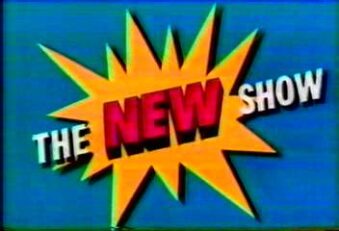 Meanwhile, executives at NBC, perhaps armed with the knowledge that current SNL executive producer Dick Ebersol was interested in moving on to less stressful pastures than the weekly production of a 90-minute live comedy show, started to look around for ways to bring Michaels back into the Peacock fold. And when Michaels approached them with the idea of a new sketch show, called appropriately enough, The New Show, they were eager to sign onboard.
Meanwhile, executives at NBC, perhaps armed with the knowledge that current SNL executive producer Dick Ebersol was interested in moving on to less stressful pastures than the weekly production of a 90-minute live comedy show, started to look around for ways to bring Michaels back into the Peacock fold. And when Michaels approached them with the idea of a new sketch show, called appropriately enough, The New Show, they were eager to sign onboard.
On paper, The New Show seemed like a sure fire hit. Besides the imprimatur of Michaels, the writing room – located along with the rest of the show’s production offices in New York City’s iconic Brill Building on Broadway and 49th Street – was packed with a number of SNL stalwarts. Jim Downey was brought in as head writer with Franken and Davis, Alan Zweibel, and SNL season 5 writers Sarah Daley and Tom Gammill also enlisted. Future SNL writers Jack Handey and George Mayer and Joel Murray, Bill and Brian Doyle Murray’s kid brother, rounded out the group. Other SNL alums on the production staff included show director Heino Ripp, music producer Howard Shore, production designers Eugene Lee and Akira Yoshimura, Costume designer Karen Roston, associate producers Cherie Fortis and Nick O’Gorman and SNL band member Cheryle Hardwick and future SNL band leader G. E. Smith as associate music producers.
 The format of the show seemed like a freshening up of Saturday Night Live with a few variations. Instead of a large ensemble cast, The New Show would have just three regulars – Buck Henry, Dave Thomas and Valri Bromfield. Buck Henry was already a familiar face to SNL fans from his many hosting appearances on the show during its first five years while Dave Thomas honed his own sketch comedy chops on Canadian import SCTV. Bromfield was an old friend of SNL alum Dan Aykroyd from their mutual time together at Toronto’s Second City theater and had appeared doing a short standup set on the very first Saturday Night Live episode before making numerous other television appearances over the next couple of years. Surrounding the three permanent cast members would be two or three guest stars for the week, with smaller roles in sketches filled in by a repertory company of comic actors.
The format of the show seemed like a freshening up of Saturday Night Live with a few variations. Instead of a large ensemble cast, The New Show would have just three regulars – Buck Henry, Dave Thomas and Valri Bromfield. Buck Henry was already a familiar face to SNL fans from his many hosting appearances on the show during its first five years while Dave Thomas honed his own sketch comedy chops on Canadian import SCTV. Bromfield was an old friend of SNL alum Dan Aykroyd from their mutual time together at Toronto’s Second City theater and had appeared doing a short standup set on the very first Saturday Night Live episode before making numerous other television appearances over the next couple of years. Surrounding the three permanent cast members would be two or three guest stars for the week, with smaller roles in sketches filled in by a repertory company of comic actors.
In an interview with the New York Times earlier in the week, Michaels outlined his philosophy on structuring the show’s cast and guest hosts thusly – “One of the things I am good at is bringing good people together and allowing them to play.”
For the premiere, Michaels brought out Jeff Goldblum, SCTV’s Catherine O’Hara and Saturday Night Live perennial guest host Steve Martin. Subsequent episodes would feature other familiar SNL faces like former cast members Gilda Radner and Lorraine Newman and past guest hosts like Carrie Fisher, Terri Garr and Candice Bergen, with other notables like John Candy, Kevin Kline, Raul Julia and Randy and Dennis Quaid taking the stage. While most of the guest stars would make single appearances, Martin made two appearances and both O’Hara and Candy would pop up on three episodes each.
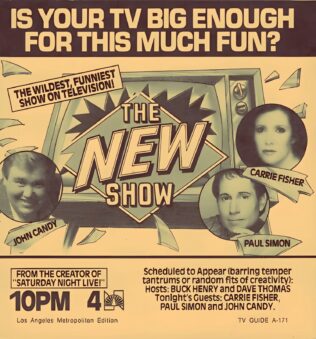 Michaels’ rep company never made it up to his hoped for size. Instead, over the show’s nine episodes a quartet of young comics did emerge. They were Maggie Wheeler, years away from her recurring role of the nasal-voiced Janice on Friends, standup Allan Havey, who would go on to host Comedy Central’s late night talkshow Night After Night a few years later, future short-term SNL season 11 cast member Dan Vitale and actress Maura Moynihan. The quartet started the first couple of episodes as little more than glorified extras in scenes, though they would gradually begin getting a line or two here and there until by the last couple of shows they were performing full fledged supporting roles in sketches. Wheeler would even receive billing in the show’s opening credits for the final show.
Michaels’ rep company never made it up to his hoped for size. Instead, over the show’s nine episodes a quartet of young comics did emerge. They were Maggie Wheeler, years away from her recurring role of the nasal-voiced Janice on Friends, standup Allan Havey, who would go on to host Comedy Central’s late night talkshow Night After Night a few years later, future short-term SNL season 11 cast member Dan Vitale and actress Maura Moynihan. The quartet started the first couple of episodes as little more than glorified extras in scenes, though they would gradually begin getting a line or two here and there until by the last couple of shows they were performing full fledged supporting roles in sketches. Wheeler would even receive billing in the show’s opening credits for the final show.
As to the show’s approach, Michaels was a little vague in that Times interview, saying “I know what the ingredients are, but I don’t know what the recipe is… I am trying to devise a format to keep writers alive and at the same time not be so different that nothing is the same from week to week. It’s hard to figure out what the baby is and what the bathwater is. And even when you do figure it out, you can’t beat it into the ground by repeating too much.” It would be a problem that he would never fully solve before the network would cancel the show a few months later.
NBC scheduled The New Show on Friday nights at 10pm, opposite the popular series Falcon Crest on CBS and Matt Houston on ABC, perhaps as a bid at counter programming against the two ratings giants. The first episode debuted premiered on January 6, 1984, right after the two-hour premier of the made-for-TV movie The Jerk, Too. Starring Mark Blankfield – direct off of the recently cancelled ABC sketch series Fridays – The Jerk, Too had no involvement from The Jerk star Steve Martin, though undoubtedly the network hoped to draw a connection in viewers’ minds between it and Martin’s appearance on the series premier. The TV movie eked out a 9.6 rating, while the premiere of The New Show managed a very slight upswing to 9.7. Comparatively, Falcon Crest pulled a 22.6 and Matt Houston nabbed a 15.8 rating that same evening, so things were not off to a great start.
Perhaps not surprising for a comedy show where the producer himself didn’t seem to quite know what the show’s tone would be, The New Show‘s first episode is a bit of a mishmash. The show kicks off with a cold open in which Steve Martin mimics Michael Jackson’s at-the-time popular music video for the song “Billy Jean.” There is really only one joke here, Martin having trouble getting the light up sidewalk squares to work like they do in the Jackson video, plus some silliness in the MTV-style song title/album credits in the lower corner of the screen. And while it does show off an impressive bit of physical work from Martin imitating Jackson’s dance moves, it doesn’t really pack to much more of a comedic punch. Two other sketches that didn’t quite work featured a group of teachers preparing for a school talent show and Steve Martin staggering around after being poisoned. Tom Schiller contributes a short film featuring comedian Joy Behar in one of her very first television appearances. It is presented as the first of what would have been a recurring series of shorts featuring Behar, though only one more would air.
The two centerpieces of that first show were an extended sketch parodying George Orwell’s classic dystopian novel 1984 and a riff off of SNL’s Weekend Update called Weekend Tonight, a spoof of show business news shows like Entertainment Tonight. The 1984 sketch featured Goldblum in the lead and was perhaps more ambitious in terms of scope than in its jokes. Weekend Tonight was less ambitious and less funny, though it did give Thomas an excuse to trot out his Bob Hope impersonation which is never a bad thing. Weekend Tonight would go on to be a regular feature of the show, often showcasing Thomas working a number of his finely-honed celebrity impersonations.
The reviews that came out in the first couple of days after the premier were not kind. Newsday‘s Marvin Kitman found the premier “dull enough for prime time,” while David Bianculli of the Philadelphia Inquirer thought a couple of sketches amusing but the show on whole “was not, however, remarkably funny.” Bud Wilkinson of the Arizona Republic opined that “it certainly needs some whiteners and brighteners and some newness to be humorous, which is a tall order for a weekly effort of this type.”
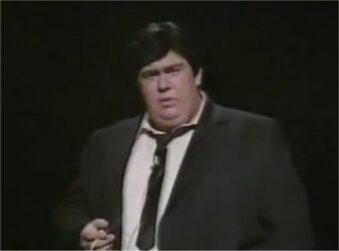 Unfortunately, the bad reviews set off some reaction on the show as subsequent episodes felt more watered down and risk adverse. Some pieces would have an interest premise, but then fail to develop them further. But that’s not to say that the show didn’t have a few standout sketches across the remainder of its run. Pieces like “Roy’s Food Repair,” The Hustler parody runner in episode 3 with Kevin Klien and John Candy as two inept pool players, the two recurring “Frightened Family” sketches, a bit of silliness in which Candice Bergen and Buck Henry play a couple driving on vacation who see a series of increasingly unbelievable things after leaving their camera at home, “Chip Masters: Organ Courier”, the runner about Dave Thomas’s evil brother Bill from the final episode and (a personal favorite) “Twilight Zonettes.” True, The New Show’s batting average may have been less than an average season of Saturday Night Live, but it never quite got as bad as one or two notoriously bad SNL seasons.
Unfortunately, the bad reviews set off some reaction on the show as subsequent episodes felt more watered down and risk adverse. Some pieces would have an interest premise, but then fail to develop them further. But that’s not to say that the show didn’t have a few standout sketches across the remainder of its run. Pieces like “Roy’s Food Repair,” The Hustler parody runner in episode 3 with Kevin Klien and John Candy as two inept pool players, the two recurring “Frightened Family” sketches, a bit of silliness in which Candice Bergen and Buck Henry play a couple driving on vacation who see a series of increasingly unbelievable things after leaving their camera at home, “Chip Masters: Organ Courier”, the runner about Dave Thomas’s evil brother Bill from the final episode and (a personal favorite) “Twilight Zonettes.” True, The New Show’s batting average may have been less than an average season of Saturday Night Live, but it never quite got as bad as one or two notoriously bad SNL seasons.
The New Show‘s first two installments were shot at CBS Studios on W 57th Street, the same place that Dana Carvey’s short-lived prime time sketch series would originate. But perhaps feeling the pressure of the reviews and maybe thinking that a return to the old studio would summon up some of the old magic, Michaels reached out to Dick Emerson to see if they could us SNL’s Studio 8H at 30 Rock when it wasn’t in use for the other show. Ebersol acquiesced, and the rest of The New Show’s run originated there. Doug Hill and Jeff Weingard’s book Saturday Night reports that Emerson “didn’t let him have everything he wanted, and some who know Dick say he enjoyed the opportunity to make Lorne squirm.” In his own memoirs, From Saturday Night To Sunday Night, Ebersol makes no mention of The New Show at all, and only speaks warmly about his relationship with Michaels.
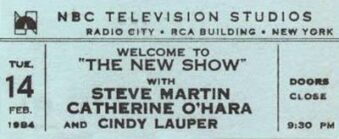 But no matter what was tried, The New Show would continually be clobbered in the ratings. While the second installment of the series only showed a slight dip to an 8.9, for the rest of its run its ratings would fluctuate between 8.8 and 6.1. It was always the lowest rated show on the network for the evening. NBC finally pulled the plug after the March 23rd show, the ninth of the planned 13 episode first season. Its time slot would be filled with would be filled with a variety of one-off rerunnings of other NBC shows like the Sam Elliot-Cyril Shepherd drama The Yellow Rose or the Lee Van Cleef-is-a-ninja action series The Master, specials like TV’s Greatest Commercial Bloopers, news specials and eventually movies. By the time the 1983-1984 television season ended, The New Show was ranked as the 99th lowest rated program of the 101 prime time shows that aired on all three networks, with a 7.9 rating. By comparison, Saturday Night Live was averaging a 7.4 rating for the season, but then the expectations for a late-night program were much lower.
But no matter what was tried, The New Show would continually be clobbered in the ratings. While the second installment of the series only showed a slight dip to an 8.9, for the rest of its run its ratings would fluctuate between 8.8 and 6.1. It was always the lowest rated show on the network for the evening. NBC finally pulled the plug after the March 23rd show, the ninth of the planned 13 episode first season. Its time slot would be filled with would be filled with a variety of one-off rerunnings of other NBC shows like the Sam Elliot-Cyril Shepherd drama The Yellow Rose or the Lee Van Cleef-is-a-ninja action series The Master, specials like TV’s Greatest Commercial Bloopers, news specials and eventually movies. By the time the 1983-1984 television season ended, The New Show was ranked as the 99th lowest rated program of the 101 prime time shows that aired on all three networks, with a 7.9 rating. By comparison, Saturday Night Live was averaging a 7.4 rating for the season, but then the expectations for a late-night program were much lower.
Michaels himself seemed sanguine about the affair, at least in retrospect. In Tom Shale’s essential oral history of SNL, Live From New York, Michaels is quoted as describing the show as a “noble failure,” and that “it was character building to have that kind of failure.” He also noted that since he was financing the show’s production personally, he wound up losing about $1 million. That’s some expensive character building.
But could The New Show have creatively pulled itself up and found an audience if given more time? It’s possible. The previous television season, the sitcom Cheers was spending its first season in the ratings cellar, and it was only through the support of NBC Entertainment Division president Brandon Tartikoff that it was allowed to grow into the classic it became. But could that have happened for The New Show as well? The Inquirer‘s Bianculli seemed to think so, noting in his initial review “If NBC gives it time, ‘The New Show’ is certain to find its own voice, if it keeps looking.” But show writer Alan Zweibel had a different view. In his memoir Laugh Lines: My Life Helping Funny People Be Funnier, in which he pretty much devotes a whopping one whole paragraph to his time on The New Show, he comments, “For the creative team, it lacked the frantic energy of what had excited us about live television.” And that doesn’t seem like something the cast and crew were able to overcome.


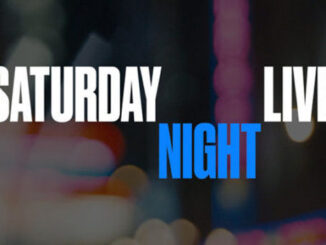


Just to lighten things up a bit, I think you’ll find that it is “lightning” (a giant spark of electricity in the atmosphere between clouds, the air, or the ground) that doesn’t strike twice.